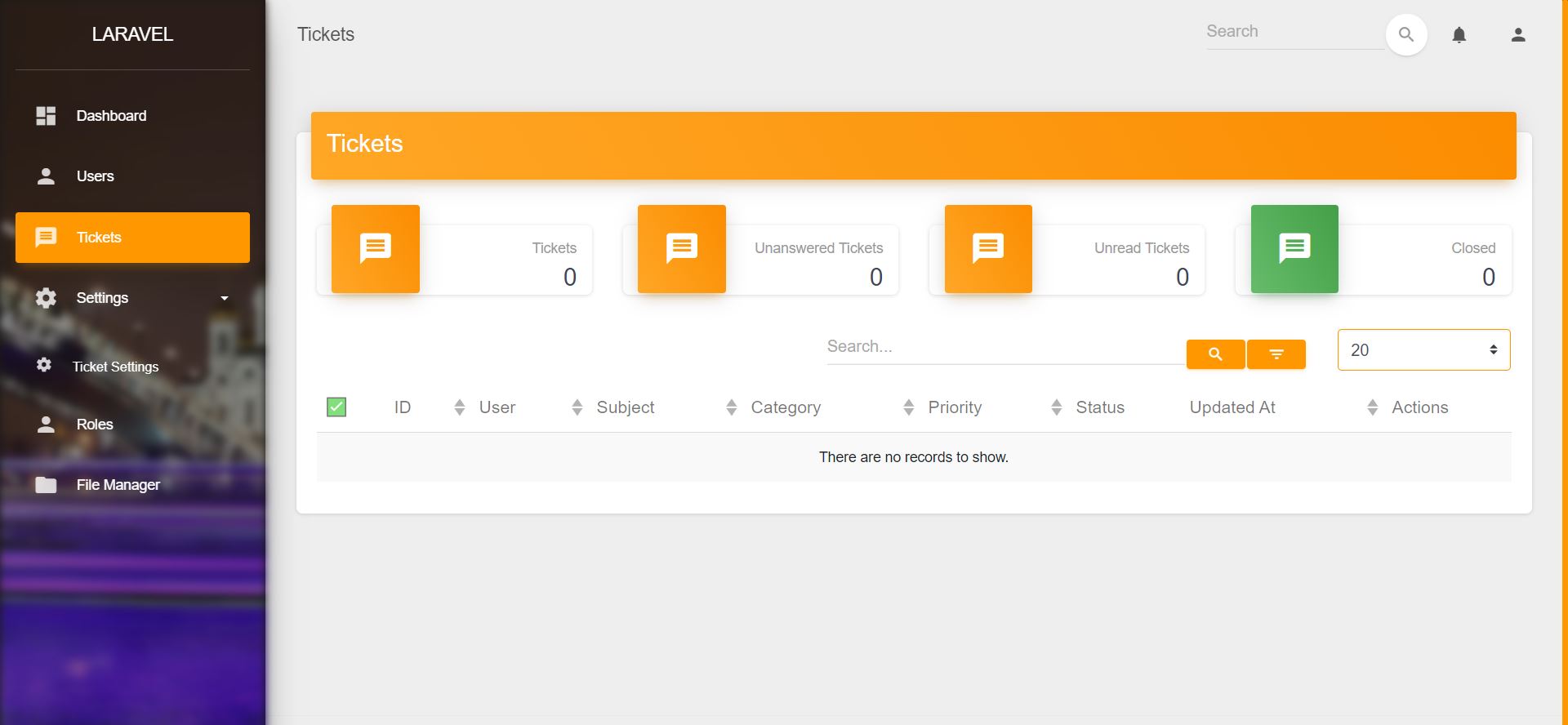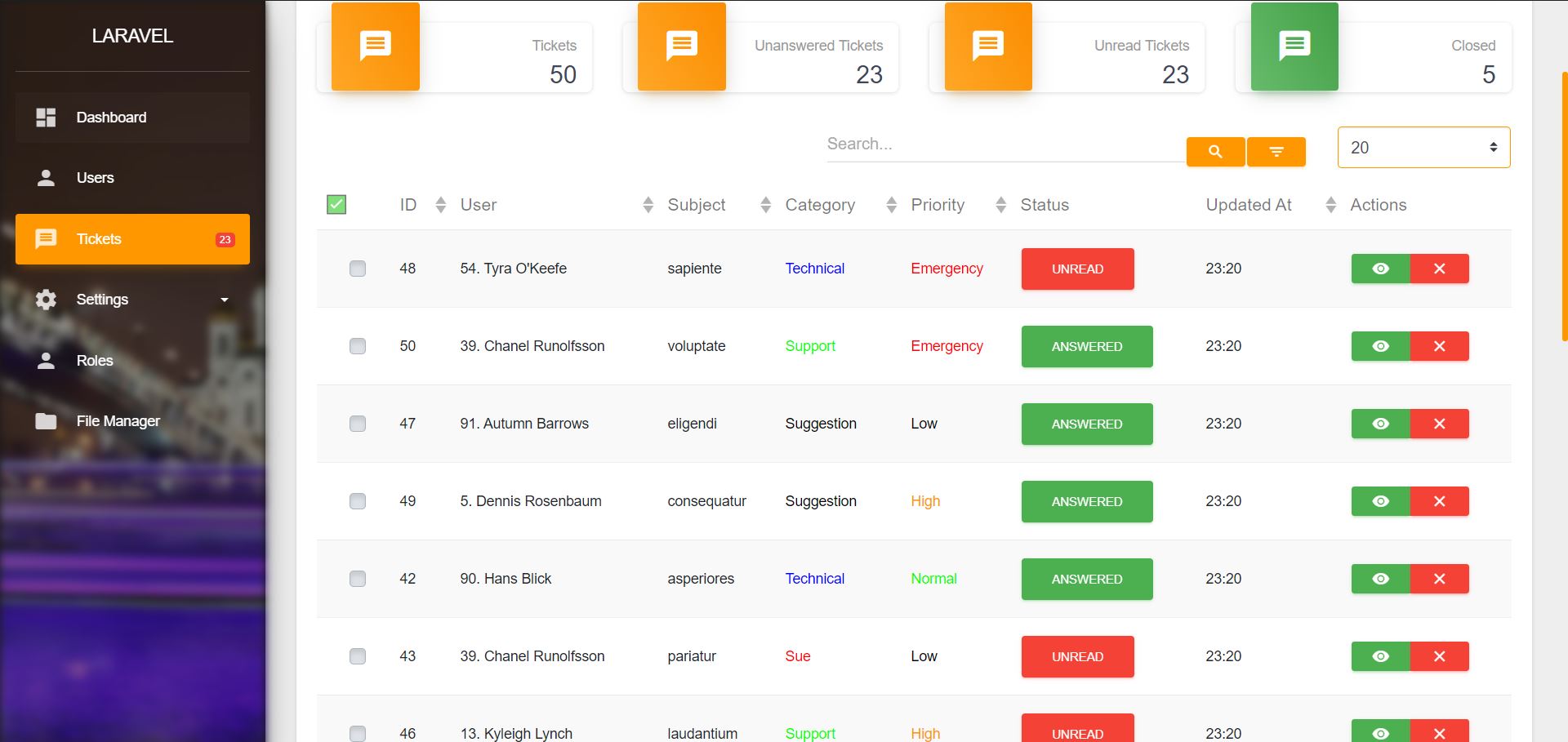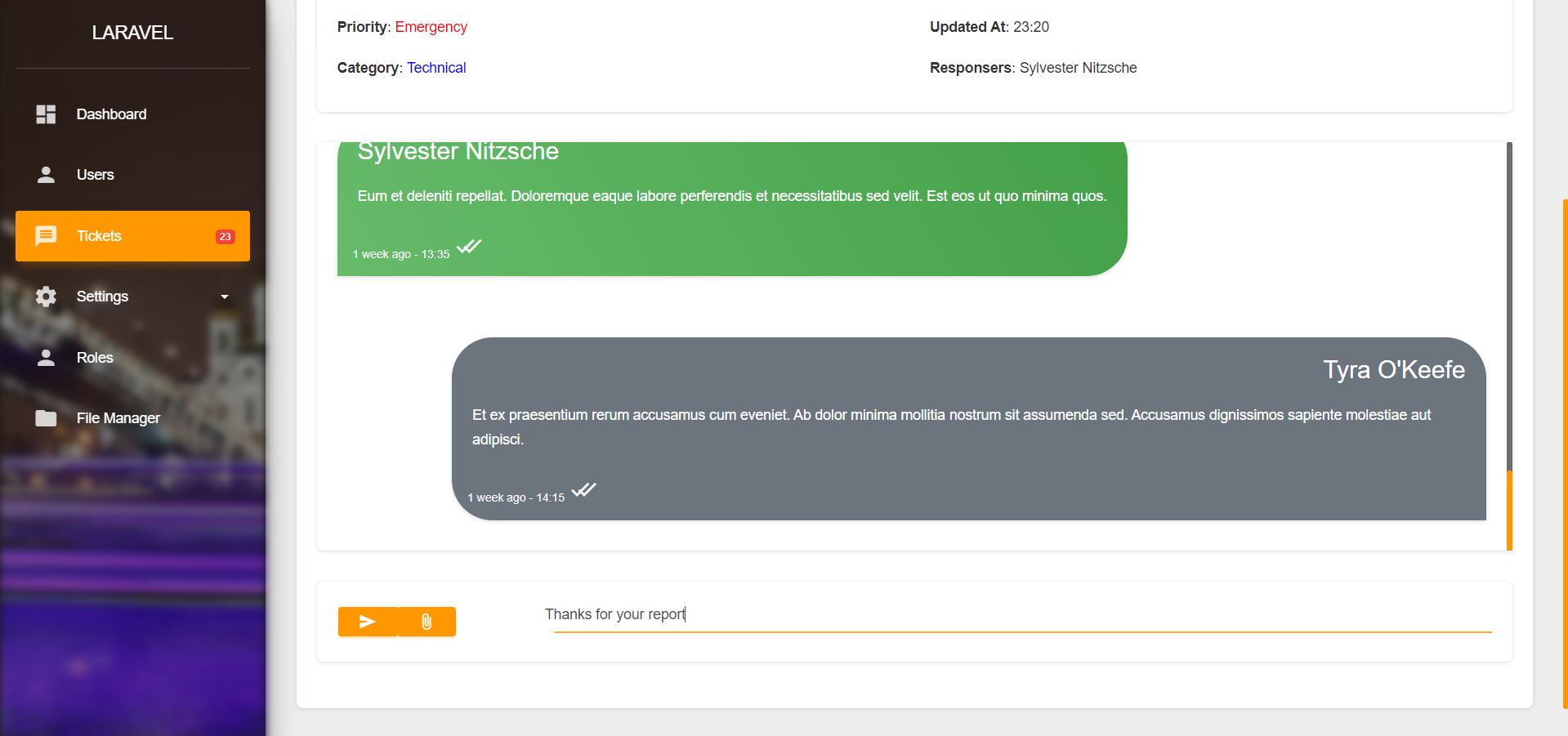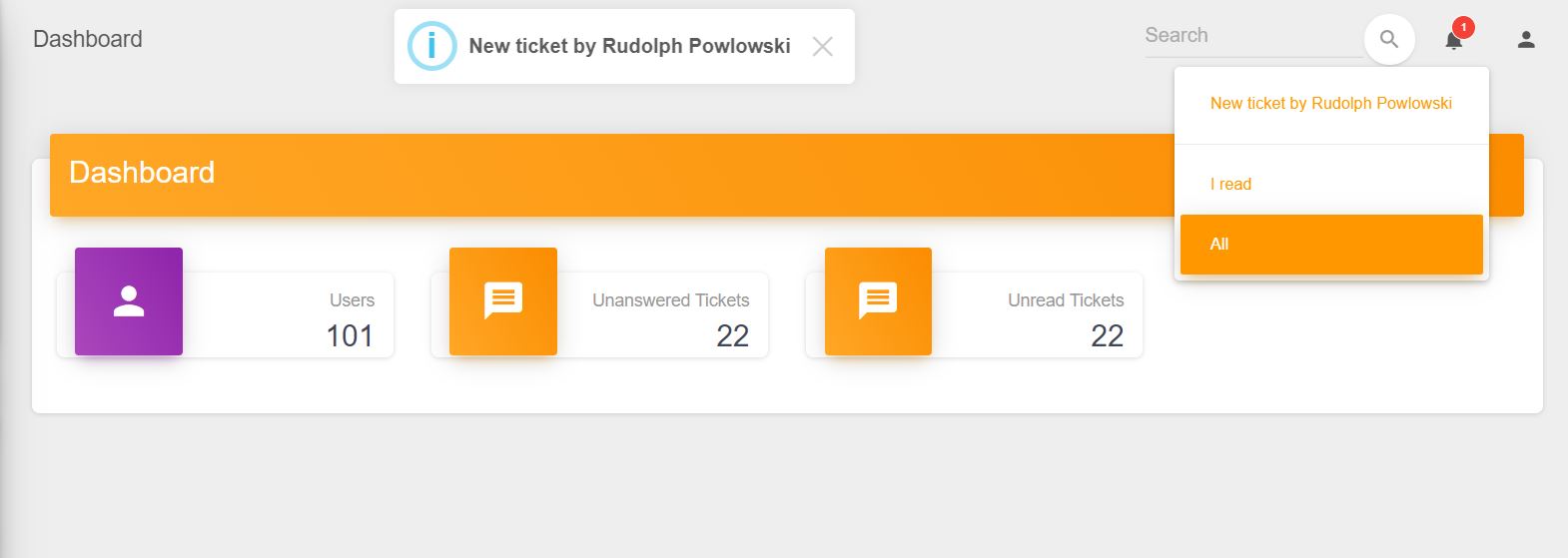Support ticketing for Sanjab
Installation
First, you should prepare Sanjab for custom compile.
Install the composer package.
composer require sanjabteam/ticketInstall the npm package.
npm i sanjab-ticket --save-devSubmit sanjab-ticket plugin for sanjab Vue instance in sanjab.js:
require('sanjab');
Vue.use(require('sanjab-ticket').default); // Add this line
if (document.querySelector('#sanjab_app')) {
window.sanjabApp = new Vue({
el: '#sanjab_app',
});
}Compile javascript:
npm run watchPublish config file:
php artisan vendor:publish --provider="SanjabTicket\SanjabTicketServiceProvider" --tag=configAdd ticket controllers to controllers in config/sanjab.php:
'controllers' => [
...
SanjabTicket\Controllers\TicketController::class,
SanjabTicket\Controllers\TicketSettingController::class,
],and add provider to plugins/providers:
'plugins' => [
/*
|--------------------------------------------------------------------------
| Plugin's service providers that should be booted before sanjab service provider.
|--------------------------------------------------------------------------
*/
'providers' => [
\SanjabTicket\SanjabTicketServiceProvider::class // Add this
],
],Migrate database:
php artisan migrateGo to the admin panel and Tickets and Ticket Settings should be in the sidebar.
Getting started
Provide some ticket category/priority.
Make sure you wrote seeder for users before this seeder and make sure you have more than 1 user.
php artisan make:seeder TicketsTableSeederOpen TicketsTableSeeder and provide some data.
<?php
use Illuminate\Database\Seeder;
use SanjabTicket\Models\Ticket;
use SanjabTicket\Models\TicketCategory;
use SanjabTicket\Models\TicketPriority;
class TicketsTableSeeder extends Seeder
{
/**
* Run the database seeds.
*
* @return void
*/
public function run()
{
TicketPriority::create(['name' => 'Low', 'color' => '#000000']);
TicketPriority::create(['name' => 'Normal', 'color' => '#00ff00']);
TicketPriority::create(['name' => 'High', 'color' => '#ff9800']);
TicketPriority::create(['name' => 'Emergency', 'color' => '#ff0000']);
TicketCategory::create(['name' => 'Support', 'color' => '#00ff00']);
TicketCategory::create(['name' => 'Technical', 'color' => '#0000ff']);
TicketCategory::create(['name' => 'Suggestion', 'color' => '#000000']);
TicketCategory::create(['name' => 'Criticism', 'color' => '#ff9800']);
TicketCategory::create(['name' => 'Sue', 'color' => '#ff0000']);
factory(Ticket::class, 50)->create();
}
}And seed:
php artisan db:seed --class=TicketsTableSeederConfiguration
- database
- model: The user model class.
- format: Format of showing user name. (Example:
"%first_name %last_name") - fields: Extra user model fileds that should be shown in ticket messages page. (Example:
["email" => "E-Mail", "mobile" => "Mobile", "address" => "Address"])
- files
- disk: Disk to save ticket files.
- directory: Directory in the disk. You can use {TICKET_ID} to make directory per ticket. (Example:
tickets/{TICKET_ID})
- notifications
- new_ticket: When new ticket message submitted.
- admin: Notification class for all admins that has access to the tickets section
- client: Notification class for the client that submitted ticket when got an answer.
- new_ticket: When new ticket message submitted.
Notification
First, make sure you created the Notifications table.
php artisan notification:table
php artisan migrateand also make sure you used Illuminate\Notifications\Notifiable trait in your user model class.
use Illuminate\Notifications\Notifiable;
class User extends Authenticatable
{
use Notifiable, SanjabUser;
^^^^^^^^^^Then you should see a bell icon in the sanjab navbar at the top for notifications.
Create a notification class for admins.
php artisan make:notification NewTicketFor example, we only gonna use the database. Of course, you can send an email and/or SMS and/or any other method.
use SanjabTicket\Models\Ticket;
class NewTicket extends Notification
{
use Queueable;
/**
* Ticket
*
* @var Ticket
*/
protected $ticket;
/**
* Create a new notification instance.
*
* @return void
*/
public function __construct(Ticket $ticket)
{
$this->ticket = $ticket;
}
/**
* Get the notification's delivery channels.
*
* @param mixed $notifiable
* @return array
*/
public function via($notifiable)
{
return ['database'];
}
/**
* Get the array representation of the notification.
*
* @param mixed $notifiable
* @return array
*/
public function toArray($notifiable)
{
return [
'text' => 'New ticket by '.$this->ticket->user->name,
'url' => route('sanjab.modules.tickets.show', ['id' => $this->ticket->id]), // Url to chat page
'toast' => true, // Show a toast alert on top
'sound' => true, // Play notification sound
];
}
}And then submit notification class in config/sanjab-ticket.php:
'notifications' => [
// ...
'new_ticket' => [
//...
'admin' => \App\Notifications\NewTicket::class,
]
]And now make a new ticket.
php artisan tinker
Psy Shell v0.9.12 (PHP 7.2.12 — cli) by Justin Hileman
>>> factory(\SanjabTicket\Models\Ticket::class)->create()Client-side
It's all up to you. You only need to work with these model classes.
- SanjabTicket\Models\Ticket
- SanjabTicket\Models\TicketMessage
- SanjabTicket\Models\TicketCategory
- SanjabTicket\Models\TicketPriority
License
The MIT License (MIT). Please see License File for more information.



